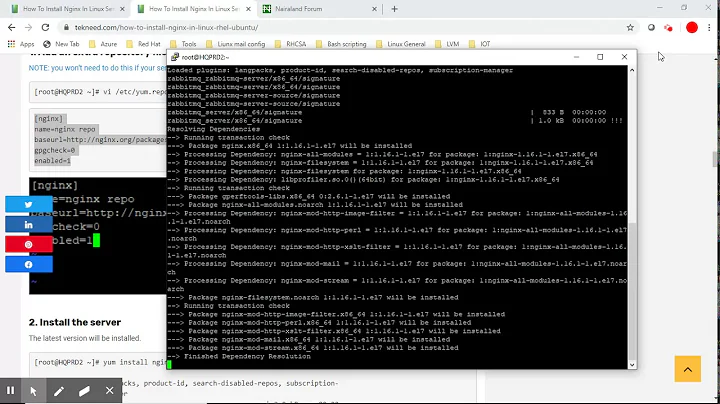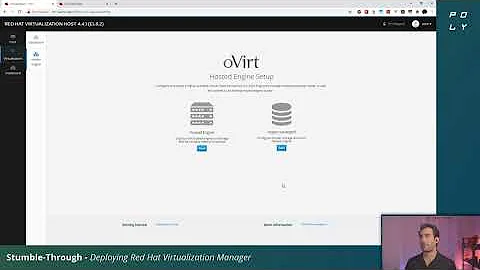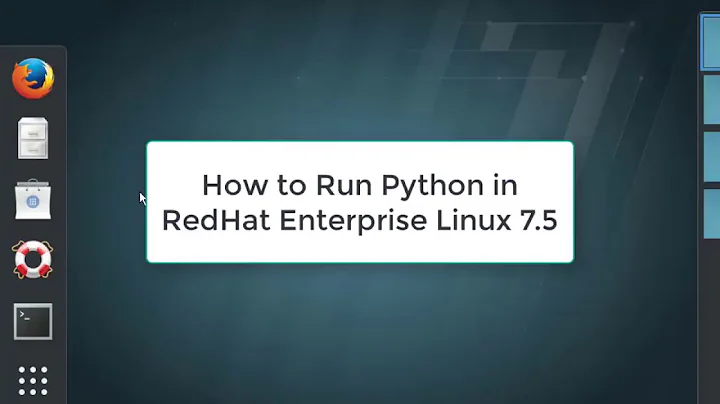How to Install VTK (with Python Wrapper) on Red Hat Enterprise Linux (RHEL)
Solution 1
Installing VTK Dependencies
Ensure gcc and g++ are installed:
yum install gcc
yum install gcc-c++
Ensure cmake is installed:
yum install cmake
Ensure OpenGL modules are installed
yum install mesa-libGL
yum install mesa-libGL-devel
(mesa-libGL is an MIT licensed implementation of OpenGL which RHEL uses)
Ensure X11_Xt_LIB is installed:
yum install libXt-devel
Ensure Python Libraries are installed:
yum install python-devel
Ensure NumPy is installed
yum whatprovides numpy # this will provide a list of package names
sudo yum install <package name>
example : sudo yum install numpy-1.7.1-11.el7.x86_64
Ensure TCL is installed
sudo yum install tcl
Installing VTK (with Python Wrapper)
Here is the reference that was used for this step
Install latest tarball source code from http://www.vtk.org/download/, e.g.
VTK-7.0.0.tar.gz-
Create the following VTK file structure:
mkdir $HOME/VTK -
extract the tarball contents into the $HOME/VTK folder:
tar -xvf ~/Downloads/VTK-X.X.X.tar.gz -C ~/VTK- replace
X.X.Xwith your version number - make sure
~/Downloads/contains your tarball
- replace
move the contents of
VTK-X.X.Xfolder directly into$HOME/VTK/and remove the folderVTK-X.X.X-
Modify your
.bashrcfile-
Open .bashrc:
sudo nano ~/.bashrc - Add
export VTK_ROOT=$HOME/VTK/to the file - run the command
source $HOME/.bashrc
-
-
Build VTK with CMake
-
cd $VTK_ROOT mkdir build cd build cmake ../ -DBUILD_SHARED_LIBS=ON -DBUILD_TESTING=ON -DCMAKE_BUILD_TYPE=Release -DVTK_WRAP_PYTHON=ONNote: if this command says there is no CMakeLists.txt, then the path '../' does not lead to the folder with the extracted data. Make sure you completed the movement of the files specified in step 4.
-
make -j5This will take a while the first time
-
make testTests to make sure everything installed properly, this too takes a while
- The result should be similar to
99% tests passed, 7 tests failed out of 1448. The fewer failures the better, however. - If many of them are failing, it may be because the build folder is not surrounded by the source folders, e.g.
Accelerators,Charts, etc...
- The result should be similar to
-
Python Wrapper
Modify your .bashrc file
sudo nano ~/.bashrc-
Add the following lines to the file
export PYTHONPATH=$VTK_ROOT/build/Wrapping/Python/:$VTK_ROOT/build/bin:$VTK_ROOT/build/lib export LD_LIBRARY_PATH=$VTK_ROOT/build/bin:$VTK_ROOT/build/lib:$LD_LIBRARY_PATH
Test installation to make sure it worked
-
python import vtkAssuming the
import vtkcommand did not complain to you, you're all set.
Solution 2
A better alternative to building it from source is to install a repository that includes it. EPEL actually has it.
Download the latest epel-release*.rpm from http://dl.fedoraproject.org/pub/epel/6/x86_64/
Install epel-release rpm:
rpm -Uvh epel-release*.rpm
Install the VTK package:
yum install vtk
Related videos on Youtube
Ulad Kasach
Updated on September 18, 2022Comments
-
Ulad Kasach over 1 year
A program I need to compile is dependent on VTK v5.4+ with Python Wrapper. VTK is not in the standard YUM repo's.
How can I install this dependency?
I am running RHEL 7 under developer subscription.
-
Julie Pelletier over 7 yearsThe main problem with building packages from source is that they are not managed by your system's package manager and eventually may cause conflicts.
-
 Honghe.Wu over 7 yearsafter install, run:
Honghe.Wu over 7 yearsafter install, run:sudo ldconfigto update ld_library, instead of export LD_LIBRARY_PATH







